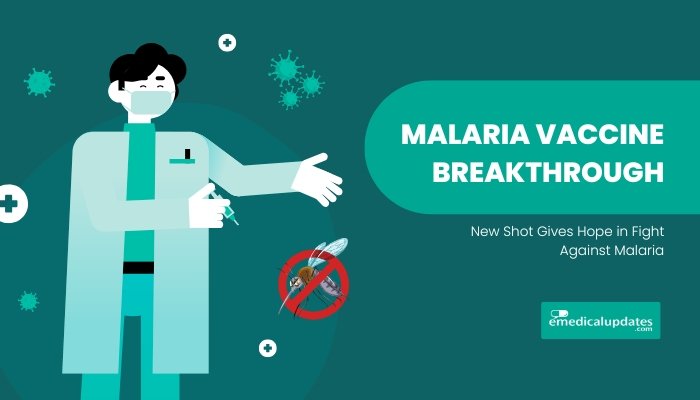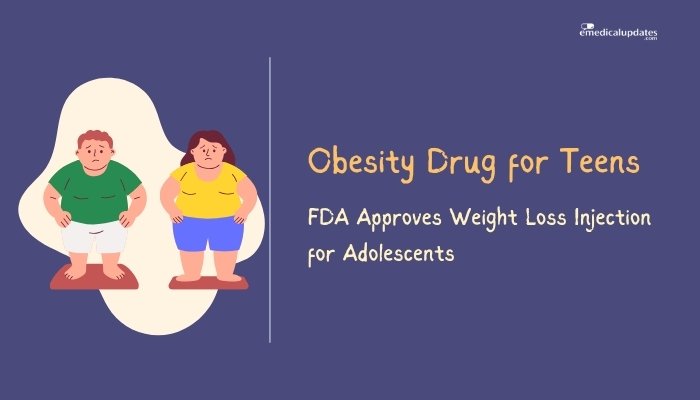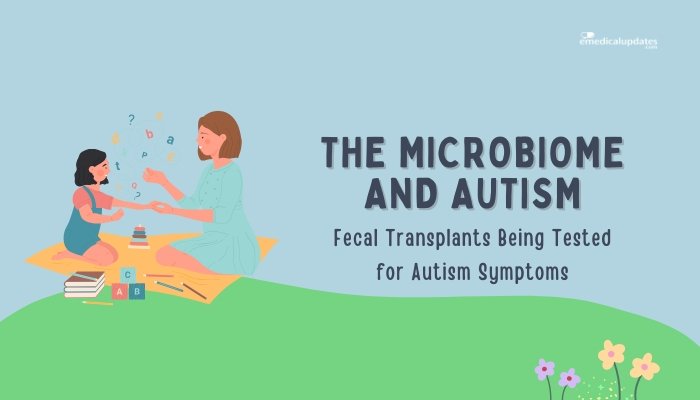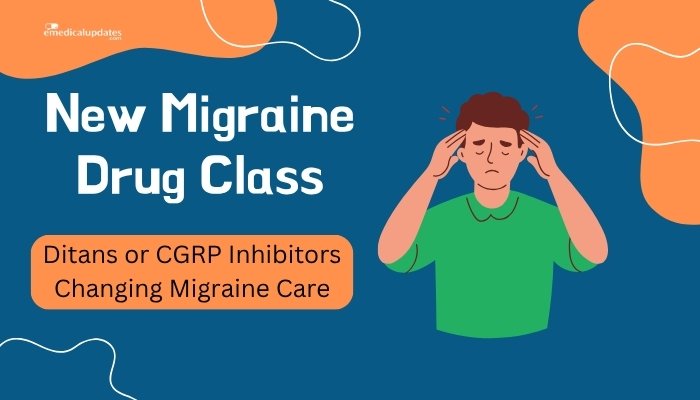Introduction
Malaria remains a leading cause of illness and death in many regions. The disease stems from the Plasmodium parasite, which spreads through the bites of infected Anopheles mosquitoes. Each year, millions contract malaria, and hundreds of thousands die. Children in sub-Saharan Africa bear the greatest burden.
Over decades, scientists have pursued vaccines to halt the parasite’s life cycle. Success had been modest, with partial protection or limited durability. Recently, however, researchers unveiled a new vaccine that appears to provide better defense than earlier formulations. This development renews hopes for more effective prevention.
Malaria control programs often center on insecticide-treated bed nets, indoor spraying, and prompt treatment of symptomatic cases. These measures save lives, yet controlling transmission remains difficult. Climate shifts, drug resistance, and changes in mosquito ecology complicate eradication.
A robust vaccine could serve as a strong ally to existing tools. Many communities in malaria-endemic regions still face challenges in accessing treatment, so a vaccine that reduces infection rates and severity can significantly curb the disease’s toll.
This article analyzes the malaria parasite’s biology, the rationale for vaccine design, and the breakthrough in new vaccine technology. It reviews data from clinical studies and clarifies how researchers hope to integrate the vaccine into existing programs.
It also addresses challenges, including production costs, distribution, and acceptance. Throughout, the focus remains on the potential of this new shot to ease the long-standing burden of malaria.
Understanding Malaria
The Malaria Parasite and Its Lifecycle
Malaria arises from parasites of the genus Plasmodium. Several species infect humans, but P. falciparum causes the majority of severe disease and fatalities. The parasite has a complex lifecycle that spans two hosts: mosquitoes and humans.
- Mosquito Stage: A female Anopheles mosquito ingests blood from an infected individual. In the mosquito, parasites develop and multiply, ultimately migrating to the insect’s salivary glands.
- Human Infection: When that mosquito bites another person, parasites enter the bloodstream and travel to the liver. Over days, they grow and multiply silently.
- Blood Stage: After an incubation period, parasites burst from the liver into red blood cells, causing symptoms like fever, chills, and sweats. They continue to replicate in red cells, leading to repeated waves of illness.
Prompt treatment can clear parasites, but lack of access to medicines or drug-resistant strains can result in severe anemia, organ complications, or death. Moreover, individuals can transmit parasites to local mosquitoes if not fully treated. The cyclical interaction between humans and mosquitoes keeps malaria entrenched in many regions.
Global Impact
Malaria remains widespread in tropical areas, particularly in parts of Africa, Asia, and Latin America. Sub-Saharan Africa experiences the highest incidence and mortality, with young children and pregnant women most vulnerable. Factors like poverty, weak health infrastructure, and limited public resources make prevention and treatment difficult.
Several interventions help reduce cases:
- Insecticide-Treated Nets (ITNs): Prevent nighttime mosquito bites.
- Indoor Residual Spraying: Kills mosquitoes resting on house walls.
- Rapid Diagnostic Tests: Allow prompt identification of infected patients.
- Antimalarial Drugs: Treat and clear parasites in the bloodstream.
These approaches have saved many lives. However, stagnation in progress and emerging drug or insecticide resistance underscore the need for vaccines that can break the transmission cycle and lower disease burden.
Early Attempts at a Malaria Vaccine
Challenges in Vaccine Development
Malaria vaccine research has been ongoing for decades. However, the parasite’s complex biology complicates efforts. Unlike viruses or simple bacteria, Plasmodium species have multiple stages and can alter surface proteins, evading immune responses. Additionally, the body may not develop lasting immunity. Even repeated infections do not always provide complete protection.
Developers have tried various strategies, including:
- Whole-Parasite Vaccines: Weakening or attenuating the parasite in the lab.
- Subunit Vaccines: Targeting specific parasite proteins that appear crucial in infection or invasion of liver and red cells.
- Transmission-Blocking Vaccines: Aiming to neutralize parasites inside the mosquito, cutting further spread.
Despite partial successes, no single approach has fully stopped the parasite. Developers often found modest efficacy, with short-lived benefits. This forced new tactics, including advanced adjuvants, improved protein engineering, and mRNA-based platforms.
RTS,S/AS01 (Mosquirix)
One milestone was RTS,S, commercialized as Mosquirix. It is a subunit vaccine that induces antibodies against the parasite’s circumsporozoite protein. Studies showed around 30–50% protection in children, prompting optimism. However, the effect waned over time, and repeated boosters were necessary. Even so, World Health Organization pilot programs in parts of Africa saw significant reductions in severe disease. These projects confirmed the concept that a malaria vaccine could be used at scale.
Mosquirix highlights the feasibility of immunizing at-risk populations. It also showed that moderate efficacy can still save many lives in high-transmission settings. Yet, the quest for higher-efficacy vaccines continued, spurring new research methods and technologies.
New Vaccine Technology: Breakthrough Approaches
mRNA-Based Vaccines
Messenger RNA (mRNA) technology rose to prominence during the COVID-19 pandemic. These vaccines deliver mRNA coding for target antigens, prompting the recipient’s cells to produce proteins that the immune system can recognize. This approach can be adapted swiftly if the parasite mutates. Key features:
- Efficiency: Rapid design and manufacture.
- Precision: mRNA sequences can include multiple parasite antigens.
- Adaptability: Easy to adjust if the parasite’s genetic makeup changes over time.
Researchers have begun testing mRNA-based malaria vaccines in preclinical and early clinical trials. Early results suggest strong immune responses, fueling hope that this platform might surpass older technologies.
Novel Protein and Vector Vaccines
Other experimental vaccines use viral vectors, such as adenoviruses, to deliver parasite genes. The vector carries segments of the parasite’s genome into human cells, triggering immune responses. Some vaccines combine vector-based prime doses with protein-based booster doses, creating strong T-cell and antibody responses.
Additionally, advanced protein engineering can stabilize target antigens, preserving key shapes for immune recognition. Improved purification and adjuvants bolster immunogenicity. These refinements aim to:
- Expose Critical Epitopes: Make sure the immune system sees the parts of the parasite that are most vulnerable.
- Extend Immune Memory: Ensure immunity does not fade quickly.
- Enhance T-Cell Involvement: Support not just antibodies but also cytotoxic T-cells that can kill infected liver cells.
Targeting Multiple Stages of the Parasite
The parasite’s life cycle suggests multiple targets. Some new vaccines aim to stop parasites before they invade liver cells. Others aim to stop replication within red blood cells. Still, others hope to block parasite development in the mosquito, preventing onward transmission. Researchers hypothesize that combining these strategies—targeting sporozoites, liver stages, and sexual stages—could provide more robust coverage.
The Latest Breakthrough: Key Features
High Efficacy in Trials
A next-generation vaccine has shown promising data in recent clinical trials, with efficacy up to 75% or higher in preventing symptomatic malaria in high-transmission settings. Although these studies involved limited populations, the results surpassed earlier benchmarks. By focusing on a refined set of parasite antigens and employing a strong adjuvant system, developers appear to induce a more potent immune response than earlier vaccines.
Additionally, preliminary data suggest that the new vaccine offers extended protection for at least one year after the final dose. This is a significant leap forward, as short-lived immunity has often hindered broad adoption. Repeated booster doses may still be required, but possibly at longer intervals.
Broad Coverage
Reports indicate that the vaccine can neutralize multiple Plasmodium strains. Malaria is highly diverse, with different geographic areas harboring variants of the parasite. A widely effective vaccine must target conserved elements. Early data imply that the new shot can tackle a range of local parasite forms, although real-world studies are needed to confirm performance across various endemic sites.
Tolerability
Safety data remain crucial when rolling out a vaccine to millions of children. The new vaccine’s side effects appear to be mild or moderate, such as temporary injection-site pain, low-grade fever, or fatigue. Serious adverse events linked to the vaccine were limited. Experts caution that post-marketing surveillance will be vital for detecting rare complications once used in large populations.
The Clinical Trial Pathway
Phase I and II
In early-phase trials, a small group of healthy adults received the candidate vaccine to test safety and measure immune responses. Researchers assessed if the vaccine formulation produced significant antibodies or T-cells. Side effects were monitored closely.
After passing initial safety hurdles, bigger Phase II trials recruited volunteers in malaria-endemic regions. Volunteers were generally older children or adults. Investigators compared infection rates between the vaccine group and a control group. Early signs of efficacy emerged, guiding developers to refine doses or schedules for optimal responses.
Phase III Efficacy Trials
Large-scale Phase III trials then tested thousands of participants across diverse sites with moderate to intense malaria transmission. Endpoints included:
- Reduction in Symptomatic Malaria: Whether vaccination curbed the number of individuals developing fever and positive tests.
- Reduction in Severe Malaria: Rates of life-threatening complications, hospital admissions, or deaths.
- Safety Profile: Ongoing tracking of side effects, both immediate and months after vaccination.
These trials confirmed the vaccine’s efficacy under real-world conditions. Differences in climate, local parasite strains, and baseline immunity were evaluated. The data formed the basis for seeking regulatory approvals and guidance from the World Health Organization.
Ongoing Research
Researchers continue tracking participants, collecting data on longer-term effectiveness and the need for boosters. Another priority is evaluating vaccine performance in different subgroups, including infants, pregnant women, or those with preexisting illnesses. Investigators also examine how the vaccine combines with other measures, such as bed nets or prophylactic drugs in high-risk populations. This integrated approach may offer synergistic benefits and further drop malaria incidence.
Implementation Challenges
Manufacturing and Distribution
Scaling up vaccine production for a global rollout poses practical challenges. Many malaria-endemic countries have limited cold-chain infrastructure, making it difficult to store and transport vaccines. Political stability, healthcare budget constraints, and logistical hurdles can slow distribution.
Moreover, advanced vaccine technologies, such as mRNA, may need specialized facilities or require ultra-cold storage. Manufacturers and donors must ensure that the final product suits local contexts. Some solutions include lyophilized (freeze-dried) formulations that reduce temperature sensitivity. Partnerships between governments, non-profits, and vaccine producers can bolster capacity-building in developing regions.
Cost and Funding
Developing and procuring a new vaccine requires significant investment. Many malaria-affected countries rely on external funding from global health agencies and philanthropic foundations. Sustaining these funds over years is essential to guarantee that children in remote villages can access vaccination programs. If a new vaccine proves more costly than previous options, decision-makers must weigh the benefits of greater efficacy against budget impacts.
High-level support from agencies like Gavi, The Vaccine Alliance, helps low-income nations secure vaccines at discounted rates. Over time, local health systems might co-finance the supply. Long-term success hinges on stable financing, so that routine immunization includes the malaria shot without interruptions.
Community Acceptance
Even an excellent vaccine fails if communities refuse it. Past experiences with polio or measles vaccination programs underscore how rumors or distrust can undermine coverage. Health workers must provide clear, accurate explanations of vaccine benefits and side effects. Parents often have many questions regarding a novel injection. Transparency builds confidence. Also, caregivers may need encouragement to bring children for multiple doses if the schedule calls for boosters.
Local leaders, teachers, or religious figures can help spread acceptance by discussing the vaccine’s potential life-saving advantages. Additionally, mass media campaigns can highlight success stories and safety data. High acceptance rates will be crucial to seeing community-wide reductions in malaria transmission.
Potential Impact on Malaria Control
Reduced Severe Cases and Deaths
If widely adopted, the new malaria vaccine could substantially lower infection rates in children, the group at highest risk. Fewer children would contract severe malaria that leads to hospitalization. This translates to fewer tragic outcomes, such as permanent neurological complications or death. Lower pediatric mortality would signal a major public health victory.
Implications for Transmission
While most current vaccines aim to prevent disease in the individual, some advanced candidates include “transmission-blocking” elements. By targeting the sexual forms of the parasite, they prevent mosquitoes from becoming infectious after feeding on vaccinated individuals. Even partial blockade can slow community-level spread. This effect would enhance existing tools (like nets and spraying), pushing incidence down further. Eventually, local elimination might become feasible in some regions.
Synergy with Other Measures
Malaria is too entrenched to rely on a single solution. Vaccine-based immunity, combined with bed nets, prompt treatment, and environmental control, can produce synergy. For instance, if half the population is protected from infection, the parasite reservoir shrinks. Mosquitoes that bite vaccinated individuals carry fewer viable parasites, thus reducing overall transmission. Over time, fewer cases mean health workers can focus on hot spots and at-risk groups, accelerating progress.
Monitoring and Surveillance
Ongoing Vaccine Efficacy Assessments
Even after licensing, robust post-market surveillance remains essential. Health officials track disease trends, safety signals, and breakthroughs in vaccinated individuals. If the vaccine’s performance dips, possibly due to parasite mutations, developers must refine formulations.
Countries with established malaria surveillance can measure changes in case counts, hospitalization rates, and mortality after vaccine rollouts. This data allows authorities to adjust strategies, perhaps by intensifying coverage in pockets where malaria remains stubborn.
Importance of Pharmacovigilance
Although early trials did not raise major safety alarms, rare side effects may only emerge after large-scale immunization. Proper pharmacovigilance systems gather reports of adverse events, investigate patterns, and issue guidance if needed. Confidence in the vaccine’s risk-benefit ratio relies on thorough, transparent monitoring.
Future Directions
Combination Vaccines
A single vaccine might not confer total immunity against all malaria species or stages. Researchers are exploring multi-component vaccines that combine proven antigens to broaden protection. Some efforts aim to merge the new shot with a transmission-blocking component, thereby addressing both the individual’s health and population-level control. If successful, these more comprehensive products could approach the ideal of near-complete malaria prevention.
Next-Generation mRNA Platforms
If mRNA technology for malaria proves successful, it might pave the way for more flexible and rapidly updated vaccines. Scientists could adapt the sequence to new parasite variants or incorporate additional target proteins. This approach mimics the adaptability seen in influenza or COVID-19 vaccines. The main challenge is ensuring stable distribution in regions with limited refrigeration. As new packaging and temperature-stable formulations emerge, mRNA-based malaria vaccines become more viable for rural settings.
Genetic Engineering of Mosquitoes
While not strictly a vaccine approach, genetic manipulation of mosquito populations might work alongside vaccination. Scientists can engineer mosquitoes that resist Plasmodium infection or pass genes that reduce mosquito lifespans. These techniques can cut the parasite’s vector capacity. In an integrated control strategy, the vaccine plus genetically modified mosquitoes could dramatically reduce malaria incidence. Still, ecological concerns and regulatory frameworks mean widespread use of gene-drive mosquitoes remains uncertain.
Public Health Considerations
Integrating into Routine Immunization
The best results often come when new vaccines fit into established child immunization schedules. DTP, measles, and polio vaccines are typically given in infancy. If the malaria vaccine demands a specific schedule, health officials must ensure it aligns with existing appointments, so families do not make extra clinic visits. Combining the new shot with other childhood vaccinations can cut costs and improve adherence.
Targeted Campaigns
Some regions experience seasonal malaria peaks. Ministries of health might plan immunization campaigns before high-transmission periods. This approach parallels seasonal malaria chemoprevention, which is timed to maximize coverage. If repeated boosters are necessary, scheduling them at key intervals can keep immunity high during peak exposure times.
Addressing Potential Gaps
Vaccination programs can overlook certain groups, including nomadic populations, remote communities, or displaced persons. Achieving high coverage requires mobile clinics or specialized outreach teams. Partnerships with local organizations can help overcome trust barriers. Working to include every child at risk, not just those near established health centers, forms part of an equitable malaria-control plan.
Economic and Social Benefits
Health System Relief
Frequent malaria cases stretch limited health infrastructure. Outpatient visits, hospital admissions, and lab tests for suspected malaria consume resources. A potent vaccine can lessen this burden. Clinics save funds and staff time, enabling greater investment in other health priorities. Families also face fewer disruptions, such as lost wages due to sick children.
Boosting Community Stability
Malaria often worsens cycles of poverty. When children miss school or adults lose workdays, household incomes drop. A proven vaccine that reduces malaria incidence can enhance social stability and foster development. Nations can redirect funds from emergency malaria responses to broader sectors, such as education or infrastructure.
Encouraging Innovation
A successful malaria vaccine breakthrough can catalyze further research into neglected tropical diseases. Platforms tested for malaria might adapt to other parasitic infections. If commercial success proves feasible, biotech companies may invest more resources in diseases historically overlooked by large pharmaceutical firms.
Comparing Key Vaccines
Below is a concise table outlining some features of three malaria vaccine candidates or existing products:
| Vaccine | Type | Target | Efficacy | Number of Doses | Key Notes |
| RTS,S (Mosquirix) | Subunit (protein) | P. falciparum CSP | ~30–50% in children | 4 doses | First malaria vaccine with WHO pilot use approval |
| R21/Matrix-M | Protein + adjuvant | P. falciparum CSP | Up to ~70–75% in trials | 3 doses + boosters | Enhanced design from RTS,S, strong efficacy data |
| mRNA-based (exp.) | mRNA platform | Multiple antigens | Early data promising (≥75%) | Varies in trials | Potential for rapid updates, requires stable supply |
Conclusion
Malaria remains a major global health threat, particularly in many low-resource settings. Traditional measures—bed nets, insecticides, prompt medication—save many lives but have not eradicated this entrenched disease. A safe, effective vaccine that can confer lasting immunity is widely viewed as the missing piece in malaria control. Researchers have persisted through decades of slow progress and setbacks, gradually refining vaccine approaches.
Recent breakthroughs, particularly involving protein-based and newer mRNA technologies, suggest that a higher-efficacy vaccine is now within reach. Preliminary data indicate that some next-generation candidates may surpass past results, reducing symptomatic malaria by a substantial margin. If these figures hold true in larger trials, local health authorities can integrate the vaccine into comprehensive malaria strategies. While hurdles remain in funding, manufacturing, distribution, and acceptance, the potential payoff is immense.
A successful vaccine can reduce severe disease and deaths in children. It can ease the economic burden on families and free health systems to address other pressing needs. Combined with ongoing use of bed nets, insecticides, and diagnostics, the vaccine can help communities approach zero malaria transmission. Such an outcome would mark a transformative milestone for global health, ending a parasite’s grip that has afflicted humanity for millennia.
The road ahead involves careful monitoring of vaccine performance, ensuring high coverage, and addressing any new challenges—like parasite genetic shifts—that may emerge. Additional research may optimize the vaccine’s longevity or combine multiple antigens for broader coverage. Yet, the most recent data offer a welcome surge of optimism. The malaria vaccine breakthroughs provide fresh hope that, in the not-too-distant future, a robust tool can finally tip the balance in favor of communities worldwide determined to free themselves from malaria’s heavy toll.
References
-
- World Health Organization. World Malaria Report 2022.
-
- RTS,S Clinical Trials Partnership. Efficacy and safety of RTS,S/AS01 malaria vaccine.
-
- Duffy PE. Transmission-blocking vaccines: harnessing the mosquito immune system for malaria control.
-
- R21/Matrix-M Malaria Vaccine Trial Investigators. Phase IIb results in Burkina Faso.
-
- Tinto H, D’Alessandro U, Sorgho H. Long-term follow-up of RTS,S vaccine recipients.
-
- Draper SJ, Sack BK, King CR. Malaria vaccines: recent advances and new horizons.
-
- Koff WC, Schenkelberg T, Williams K. Accelerating vaccine development: lessons from COVID-19 for malaria.
-
- Greenwood B. The recurring challenges of malaria vaccine development.
-
- Ballou WR, Arevalo-Herrera M, Carucci DJ. Update on malaria vaccine research and development.
-
- PATH Malaria Vaccine Initiative. Implementation strategies for malaria vaccine introduction.
-
- Hill AVS. Vaccines against malaria.
-
- Malaria Vaccine Funders Group. Funding priorities for advanced malaria vaccine candidates.




